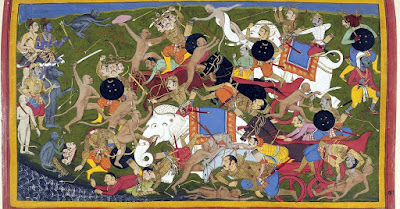THE LITERARY CANON: AN OVERVIEW
THE LITERARY CANON: AN OVERVIEW
Defining canon?
The word canon comes from the Greek word Kanon, meaning a
measuring rod or standard.
Now, the literary works that have achieved the status of
classics, i.e of lasting quality and timeless worth are clubbed under the literary
canon.
Oh! What's classics?
Classics are an outstanding example of timeless worth and lasting quality. It was first used by the 2nd-century Roman writer Aulus Gellius.
It is said that Aulus in the miscellany Noctes Atticae place writers as classics scriptor, non preletarius ( " A distinguished, not a commonplace writer").
Now, this kind of classification began with the Greeks! The ranking of their cultural works appeared with the word canon.
A canon could be a body of work representing high culture: be it literature, music or philosophy.
Now, in literature, if you ask, we have influential works from every continent. Continent, you say! Well, some classics precede the coinage of the word 'continent' itself!
So, let's time-travel before the seven main divisions of land.
How far back in time is too far?
The answer to the chronological and sequential sense is ancients, probably? Yes!
THE BEGINNING- 2000BC- 1343 AD( the birth date of Geoffery Chaucer, an English poet and author for the sake of convenience)
- The Middle East- Epic of Gilgamesh ( Mesopotamian mythology), Book of the Dead ( ancient Egyptian loose collection of texts depicting the journey of deceased into the afterlife) and the Bible.
- Ancient India- Valmiki's Ramayana and Vyasa's Mahabharata, Kalidasa's Abhijana shakuntalamI
- Ancient Greece- the Iliad and the Odyssey of Homer and Oedipus Rex of Sophocles
- Ancient Rome- Virgil's Aeneid and Ovid's Metamorphosis, Dante's Divine Comedy
- The Old and the Middle English Period- Beowulf, The Confessions of Saint Augustine
THE MIDDLE- 1343 AD- 1837 AD
- Italy- The Prince( Machiavelli), The Servant of Two Masters(Carlo Goldoni)
- France- Essays (Montaigne), The Misanthrope (Moliere)
- Germany- Faust (Goethe)
- Spain- Don Quixote (Cervantes)
- The United Kingdom- Hamlet( Shakespeare), Paradise Lost (Milton), Gulliver's Travels (Jonathan Swift)
- Portugal- The Lusiads ( Luis de Camoes)- A Portuguese epic poem frequently compared to Virgil's Aeneid
THE END- 1837AD- 1900 AD
- The United Kingdom- Pride and Prejudice( Jane Austen), The Adventure of Oliver Twist (Charles Dickens)
- Italy: The Adventures of Pinocchio( Carlo Collodi), The Betrothed ( Alessandro Manzoni)
- France: Madame Bovary( Gustave Flaubert) and Les Miserables( Victor Hugo)
- Germany: Children's and Household Tales (Grimm Brothers)
- Spain and Portugal: Fortunata and Jacinta ( Benito Perez Galdos) and La Regenta ( Leopoldo Alas)
- United States: The Adventures of Huckleberry Finn ( Mark Twain) and Moby Dick ( Herman Melville)
- Russia: Crime and Punishment ( Fyodor Dostoevsky) and Anna Karenina ( Leo Tolstoy)
TODAY: THE SEVEN CONTINENTS AND SUBCONTINENTS ( 1900- ...)
- The United Kingdom of Great Britain and Ireland: Ulysses ( James Joyce), Mrs Dalloway ( Virginia Woolf), The Waste Land (T.S. Eliot)
- Italy: Six Characters in Search of an Author ( Luigi Pirandello), Waiting for Godot ( Samuel Becket)
- Germany: The Trial( Franz Kafka) and The Magic Mountain ( Thomas Mann)
- United States: The Great Gatsby( F. Scott Fitzgerald) and The Old Man and the Sea (Ernst Hemingway)
- Russia: One Day in the Life of Ivan Denisovich ( Aleksandr Solzhenitsyn)
- Latin America: Canto General ( Pablo Neruda) and One Hundred Years of Solitude( Gabriel Garcia Marquez)
- Africa- Things Fall Apart ( Chinua Achebe) and A Grain of Wheat ( Ngugi Wa Thiongo)
- Australia and New Zealand: The Man Who Loved Children ( Christina Stead) and An Imaginary Life ( David Malouf)
CONCLUSION
The canon of books has been ever-expanding since ancient times. A canon whether western or eastern represents the national and cultural heritage and tradition of a nation. It chronicles the growth of the human race with respect to the social, cultural and economic backdrop of the times.


The relationship between 'canon' and 'classics' has been addressed so well and lucidly. This list of classics spans ages, countries and cultures and is thus comprehensive and can make for a go-to mini-list of classics.
ReplyDelete